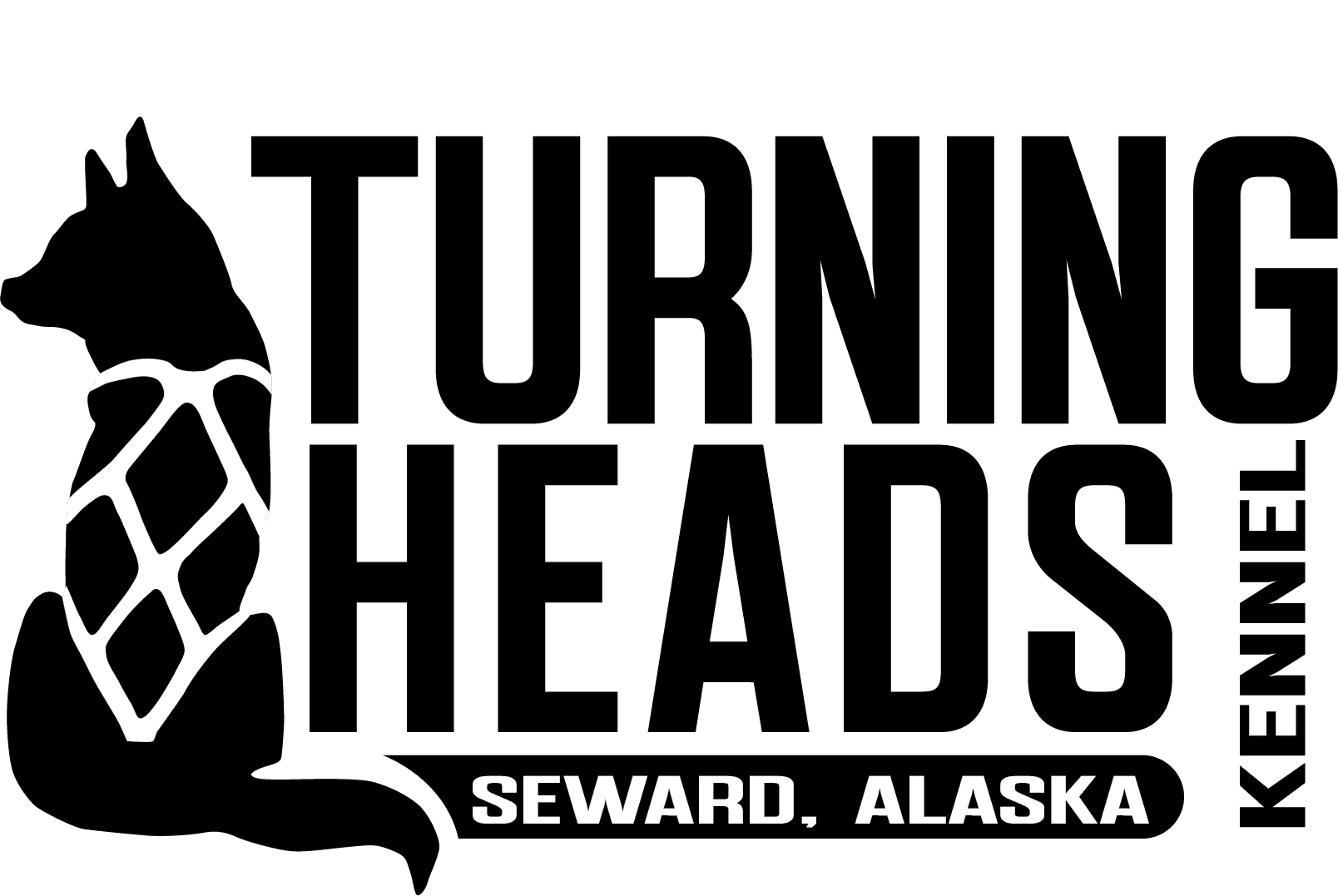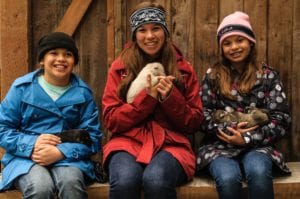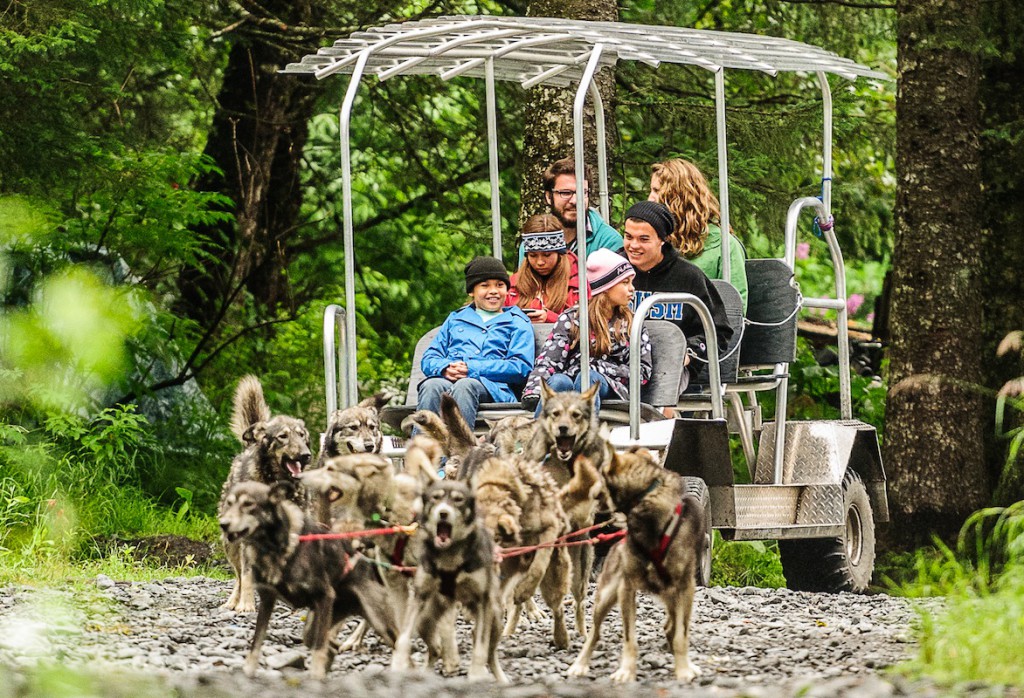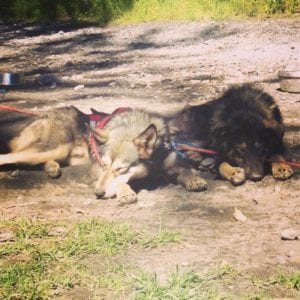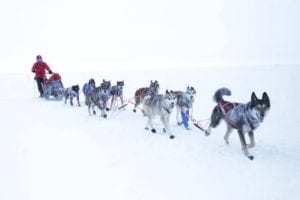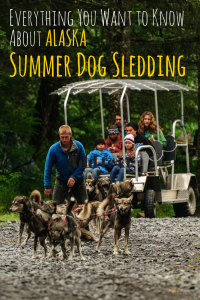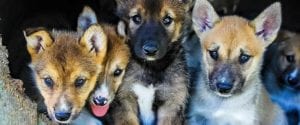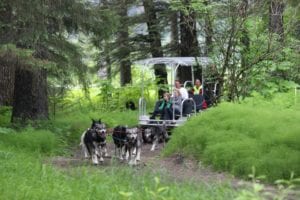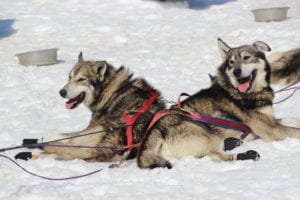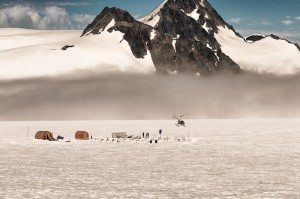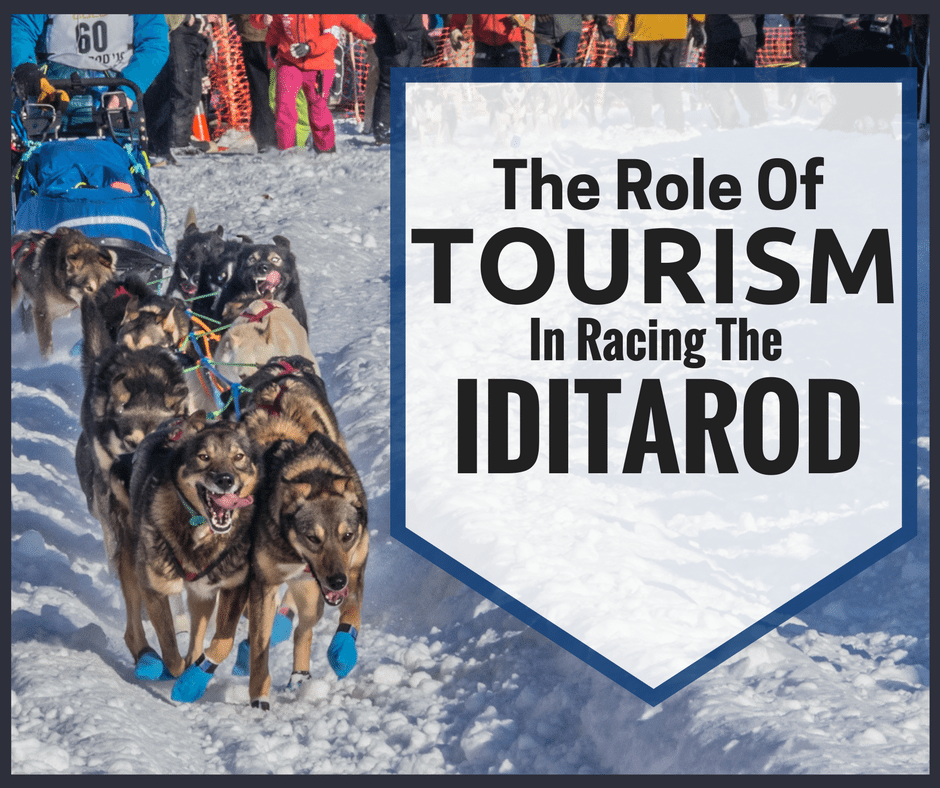
It seems strange to think that a little over a month ago, we were in Nome completing a 1,000-mile journey with our dogs. While we work on organizing Travis’ stories from the trail we thought we’d write about the migratory lives that many in the mushing world live in order to fund this crazy lifestyle.
Dog sledding in Alaska is not a cheap sport to participate in and running Iditarod, makes dog sledding much more expensive. Racing a 1,000-mile endurance race requires lots of additional training which in turn requires the dogs to eat a lot more food and go through lots of booties. We go through approximately 6,000 booties over the course of a training season. Our dog food bill is more than our mortgage, utility payment, and truck payment combined! On the low end of the scale, mushers spender approximately $30,000 dollars to train and race a team capable of reaching the finish line in Nome. Lots more, if you plan on running competitively. Of course, regardless of what is said by animal right’s activists, the financials of racing Iditarod do not make sense. Teams finishing in the top 20 are, at best, breaking even. We participate in the Iditarod because we love traveling the trail with our dogs: nothing is more remarkable than going on a 1,000 mile journey with your best friends!
Although many mushers hope for large sponsorships to materialize to offset the heavy financial burden running an Iditarod kennel entails, the majority of Iditarod mushers and their handlers have to figure out how to finance the high cost of running dogs on their own. Many mushers look to Alaska’s booming tourism economy to make their winter dreams a reality. Alaska dog sledding tours help turn many mushers’ Iditarod dreams into realities.
Because the tourism industry allows mushers to continue to work with our dogs, it is heavily favorited by dog mushers. Mushers pursue dog sledding because they love to be around dogs and working in tourism allows this. Other popular occupations for Iditarod racers include construction as well as fishing which are also seasonal occupations here in Alaska.
For our kennel and our Iditarod ambitions, we rely on tourism. We operate two different dog sled tours out of our hometown of Seward, Alaska. At our kennel, we operate a dog sled tour that focuses on providing hands-on experiences to small groups of guests. Our goal is to share our passion for dog mushing and also to educate the public on dog sled racing and sled dog care. The tour includes a fun dog sled ride on a wheeled car through wooded trails where we perform a one-of-a-kind lead dog demonstration, showing off our dogs’ training and intelligence. We love this tour because it focuses on training new lead dogs and takes our guests “behind the scenes” to show how we use positive reinforcement to teach our sled dogs our dog mushing commands.
We also offer a dog sled tour up on Godwin glacier for those seeking a winter-like experience and wanting to experience Alaska dog sledding on snow in the summer. Guests take a helicopter ride up to Godwin glacier, mush for two miles, and enjoy the amazing scenery. It’s really incredible how you can go from a summer landscape to a winter landscape in just a short helicopter ride! Alaska’s beauty constantly amazes us and this tour has been described as “life-changing” and “the trip of a lifetime!” Our dogs certainly enjoy getting to go on a winter vacation and we frequently rotate the dogs between our kennel and our remote glacier camp.
Our tour operation gives us lots of freedom not only in how our tours are conducted but also in how our dogs are cared for. For us, our livelihood also allows us to work with our dogs day in and day out which has major training benefits. We believe our summer dog sled tours really help us as a competitive racing kennel as we can continue to work with dogs and train lead dogs, work on developing young talent, and building a cohesive team. Tourism is also a really great way to introduce people to our sport and teach visitors all about how we care for our sled dogs.
With this to look forward to after returning home from Nome, we slowly began packing up our Willow residence. It almost seemed like we couldn’t leave Willow quick enough — the snow in Willow was melting and after having been gone from Seward for over 6 months, we were ready to return home. So we began the long arduous process of moving.
The process has taken weeks and is slowly coming to an end with the final dogs arriving in Seward. We couldn’t be happier in returning home: our local community has supported us in every conceivable way — from throwing fundraisers, to recommending our tours, to even helping prepare our food drops.
We are excited for summer to begin and for the opportunities that await us. We look forward to meeting new friends and sharing our passion for mushing with our guests. In between, we will enjoy the sunshine, barbeques, gardening, and friends that only home can offer.
We are so grateful for all the support our kennel receives from visitors to Alaska. Thanks for helping turn our dream into a reality and allowing us to live this wonderful lifestyle with our dogs.
Bring on the summer! We can’t wait!
